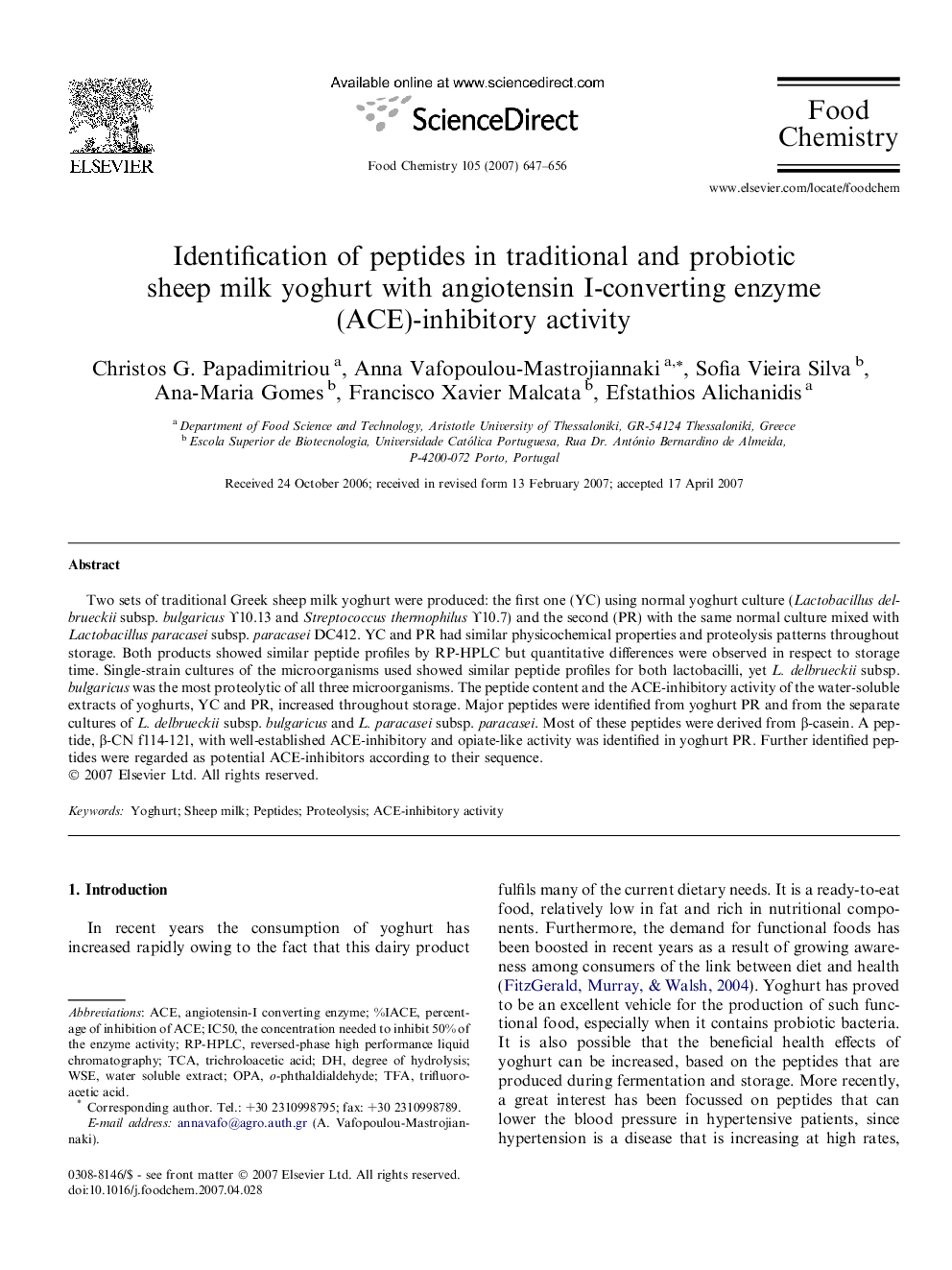| Article ID | Journal | Published Year | Pages | File Type |
|---|---|---|---|---|
| 1189532 | Food Chemistry | 2007 | 10 Pages |
Two sets of traditional Greek sheep milk yoghurt were produced: the first one (YC) using normal yoghurt culture (Lactobacillus delbrueckii subsp. bulgaricus ϒ10.13 and Streptococcus thermophilus ϒ10.7) and the second (PR) with the same normal culture mixed with Lactobacillus paracasei subsp. paracasei DC412. YC and PR had similar physicochemical properties and proteolysis patterns throughout storage. Both products showed similar peptide profiles by RP-HPLC but quantitative differences were observed in respect to storage time. Single-strain cultures of the microorganisms used showed similar peptide profiles for both lactobacilli, yet L. delbrueckii subsp. bulgaricus was the most proteolytic of all three microorganisms. The peptide content and the ACE-inhibitory activity of the water-soluble extracts of yoghurts, YC and PR, increased throughout storage. Major peptides were identified from yoghurt PR and from the separate cultures of L. delbrueckii subsp. bulgaricus and L. paracasei subsp. paracasei. Most of these peptides were derived from β-casein. A peptide, β-CN f114-121, with well-established ACE-inhibitory and opiate-like activity was identified in yoghurt PR. Further identified peptides were regarded as potential ACE-inhibitors according to their sequence.
